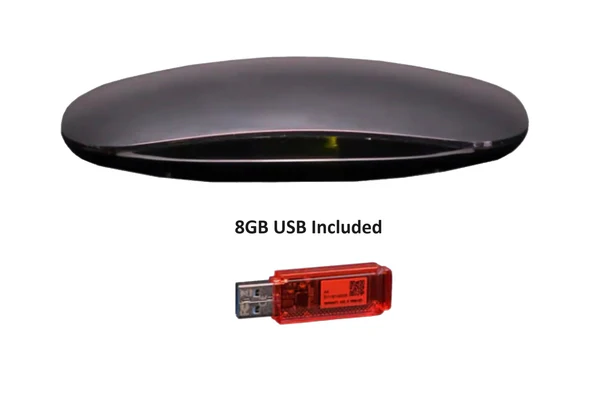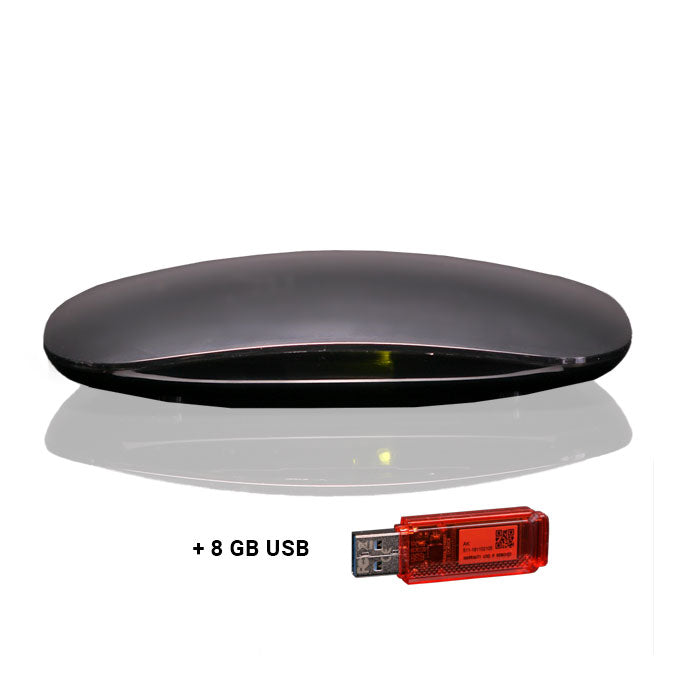
An HDTV DVR (Digital Video Recorder) is a device that allows users to record high-definition television programs from various sources, including cable, satellite, and over-the-air (OTA) broadcasts. This technology enables you to store your favorite TV shows, movies, and events, allowing you to watch them later at your convenience. By using an HDTV DVR, you no longer have to rely on live viewing, as you can record programs to watch at any time, making it a must-have for anyone looking to personalize their TV experience.
How Does an HDTV DVR Work?
An HDTV DVR captures the broadcast signals of TV programs, stores them on internal or external storage, and lets you watch these programs later. To use an HDTV DVR, you need to connect it to your TV and either a cable box, satellite receiver, or antenna. After programming the DVR to record specific shows, the device automatically captures the broadcast content and stores it in high-definition quality. The DVR allows users to pause, rewind, or fast-forward through recordings, providing a customized viewing experience that traditional TV doesn’t offer.
Benefits of Using an HDTV DVR
The primary benefit of using an HDTV DVR is convenience. It enables you to record multiple programs and watch them at a later time, giving you complete control over your viewing schedule. Furthermore, an HDTV DVR helps eliminate the need for cable or satellite on-demand services, cutting down monthly subscription fees. You also can skip commercials, a huge advantage for those who prefer uninterrupted viewing. With the option to pause and rewind live TV, it enhances your viewing experience and allows you to enjoy shows on your terms.
Choosing the Right HDTV DVR
When selecting the best HDTV DVR, consider factors such as storage capacity, the number of tuners, and compatibility with your current television setup. Storage capacity determines how many shows or movies you can store on the DVR, with some models offering more than 1TB of space. The number of tuners determines how many programs can be recorded simultaneously, which is ideal for households with multiple TV viewers. Compatibility with your TV source—whether cable, satellite, or OTA—is essential to ensure that the DVR works seamlessly with your system.
Types of HDTV DVRs
There are several types of HDTV DVRs available, depending on your needs and viewing habits. Standalone DVRs are dedicated devices designed solely for recording TV content. These can be used with any TV source, such as cable, satellite, or OTA broadcasts. For users with smart TVs or streaming devices, there are cloud-based DVR systems that store recordings online, allowing access to them from anywhere. Some DVRs even offer hybrid models that combine streaming services and traditional DVR features, providing a more versatile way to enjoy both live and recorded content.
Setting Up an HDTV DVR
Setting up an HDTV DVR is typically a straightforward process. Begin by connecting the device to your TV and your TV source, whether it’s a cable box, satellite receiver, or antenna. Then, follow the on-screen instructions to scan for available channels or connect to your streaming service. Once set up, program the DVR to record your favorite shows, and start watching your content whenever you choose. Some DVRs offer additional features such as remote access via a mobile app, allowing you to manage recordings on the go.
Features to Look for in an HDTV DVR
When shopping for an HDTV DVR, there are several features you should look for to enhance your viewing experience. A high-quality DVR will offer multiple tuners, which allow you to record different programs simultaneously. This is especially useful in households where more than one person is interested in recording TV shows at the same time. Additionally, you should check the DVR’s storage capacity. The more storage space it has, the more shows and movies you can record. Other desirable features include the ability to skip commercials, stream recorded content to other devices, and access recordings from remote locations.
Cloud-Based DVR vs. Traditional DVR
A key decision when choosing an HDTV DVR is whether to go with a cloud-based DVR or a traditional DVR. Cloud-based DVRs store recorded content on remote servers, allowing you to access your recordings from any device with internet access. This is ideal for users who want to watch content on the go or don’t want to worry about storage limits. Traditional DVRs, however, store recordings on a local hard drive, offering faster access and no dependence on an internet connection. Both systems have their pros and cons, so your choice will depend on your preferences for convenience and storage.
Storage Capacity for HDTV DVRs
Storage capacity is one of the most important features to consider when choosing an HDTV DVR. DVRs typically come with storage capacities ranging from 500GB to several terabytes. The more storage you have, the more content you can record. If you plan to record multiple shows or movies every week, a larger storage capacity will be beneficial. For example, a 1TB DVR can store hundreds of hours of HD content. Keep in mind that cloud DVR services may come with storage limits or require additional fees for extra space, whereas traditional DVRs have fixed storage.
Recording Multiple Shows Simultaneously
An HDTV DVR with multiple tuners allows you to record several shows at once. This feature is particularly useful for households with multiple TV viewers or when different family members want to record different programs at the same time. Some DVRs come with two or four tuners, while high-end models may have up to six or more. The ability to record multiple programs simultaneously ensures that you never have to miss a show, even if they air at the same time. This feature gives you more control over your viewing schedule and maximizes the DVR’s capabilities.
Managing Your Recorded Content
Effective management of your recorded content is essential for making the most out of your HDTV DVR. Most DVRs come with an easy-to-use interface for browsing and organizing recorded shows. You can delete or transfer content to free up space, or even set up a recording schedule to automatically capture specific programs. Many DVRs also offer features such as the automatic deletion of old recordings, ensuring that your storage is always available for new content. Regularly managing your DVR content will help prevent storage issues and ensure that your recordings are always accessible.
Watching Recorded Content on Multiple Devices
Many HDTV DVRs now offer the option to watch your recorded content on multiple devices, including smartphones, tablets, and laptops. This feature is especially useful for people who want to watch their favorite shows on the go or in different rooms of the house. Some cloud-based DVRs allow you to stream recorded shows remotely, meaning you can watch your content even when you’re not at home. With a traditional DVR, you may need to transfer recordings to another device using a USB drive or other methods. Either way, this flexibility enhances the convenience and accessibility of your recorded content.
The Cost of an HDTV DVR
The cost of an HDTV DVR can vary widely depending on the features and storage capacity. Basic models typically start at around $100 to $150, while more advanced models with larger storage and additional tuners can range from $200 to $500 or more. Cloud-based DVR services often charge monthly subscription fees, which can range from $5 to $15 per month, depending on the provider. While the initial cost of a DVR may seem significant, it can save you money in the long run by eliminating cable or satellite subscription fees and providing a more flexible way to enjoy TV content.
Future of HDTV DVR Technology
The future of HDTV DVR technology looks promising, with ongoing advancements in storage, connectivity, and ease of use. As internet speeds improve, cloud-based DVR systems will continue to evolve, offering faster access to recorded content and more storage options. Newer models are also likely to include smarter features, such as integration with voice assistants and enhanced AI for content recommendations. Furthermore, improvements in compression technology will allow for even better-quality recordings, making the HDTV DVR an even more indispensable tool for TV enthusiasts.
FAQs About HDTV DVRs
Do I need an internet connection for an HDTV DVR?
For traditional DVRs, an internet connection is not required for recording and viewing content. However, cloud-based DVR services do require an internet connection for accessing recordings and managing your content remotely.
Can I record live TV with an HDTV DVR?
Yes, an HDTV DVR allows you to record live TV, pause, rewind, or fast-forward during playback. You can schedule recordings in advance or start recording on the fly, giving you full control over your TV viewing.
Can I use an HDTV DVR with streaming services?
Some advanced HDTV DVR models offer integration with streaming services, allowing you to record streaming content in addition to regular TV broadcasts. However, the functionality depends on the specific DVR and service you are using.